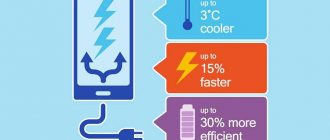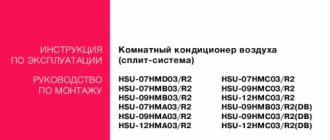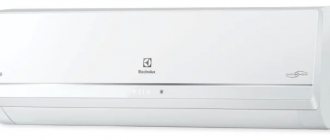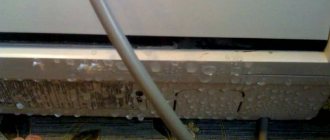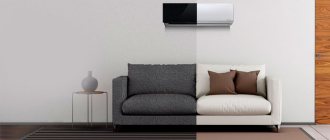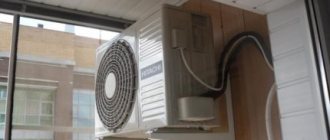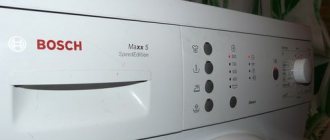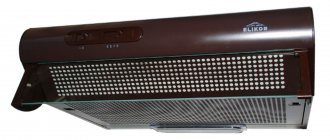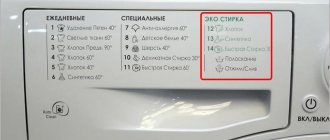An air conditioner is, first of all, a device for maintaining the desired temperature in a room. The transfer of air conditioners from one mode to another occurs both manually and from a remote control. In any price category there are air conditioners with the same functionality.
The presence of operations on it depends on the configuration. As a rule, a household unit has several functions that are designated on the air conditioner remote control in the form of intuitive symbols. What modes the icons and inscriptions symbolize will be discussed in this article.
General air conditioner modes
The basic functions of an air conditioning device are found in every classic product, and they have designations of air conditioning modes in the form of symbols and inscriptions in English. However, most of these words require translation.
In this row, you can determine what functions the air conditioner performs in the form of the following inscriptions and signs:
- Cool – coolness, indicated by a snowflake.
- Heat – heating, there is a sun icon.
- Dry – drying, icon – drop.
- Fan speed – ventilation, a propeller is shown next to the inscription.
- Sleep – night auto mode. Star symbol.
- Timer – timer. Image of a clock.
- Swing – direction of air flow through curtains.
- Lock – child lock button.
Functions of an air conditioner
When choosing an air conditioner for your home, you usually determine, first of all, energy consumption, and, of course, the minimum possible operations. And although the functions of the air conditioner: air dehumidification, ventilation, ionization and disinfection are not so noticeable at first glance, they significantly increase the comfort of living when using them.
Standard modes
The main functions of an air conditioner are: dehumidification, cooling and heating of indoor air. The modes and their designation on the air conditioner remote control should be studied in advance in order to know the technical capabilities of the equipment. Cooling occurs due to the transition of the liquid state of the refrigerant into the gaseous state, which is carried out due to the intake of warm air from the room, and when heating the process occurs in the opposite way.
Each air conditioner has basic modes and additional ones, which directly depend on the manufacturer and model of the device. Designation of icons on the air conditioner remote control:
- Cool – cooling, looks like a snowflake.
- Heat – heating, indicated on the air conditioner remote control by a sun.
- Dry – drying, image of a drop.
- Fan – a fan with a corresponding design.
- Sleep – night mode, star image.
- Lock – child protection.
- LED – display backlight for working in the dark.
Cooling the room
Each air conditioner is designed primarily to cool the air mass in the room. Switching to this mode is done on the remote control with a button where a snowflake is depicted, which means “cold”.
Good to know! Coolness occurs through a physical process, or, more precisely, the transformation of a substance (refrigerant, freon) from liquid to gaseous state.
When the air conditioner is in auto cooling mode, it turns on when the room temperature rises. After the degree readings have reached their configured value, the compressor in the external module is turned off (if it is a split system). For better comfort, the fan speed in the indoor unit is automatically adjusted depending on the room temperature.
The speed of the outdoor fan changes depending on the condition of the outdoor unit's capacitor. As soon as the moisture release decreases, which means the pressure inside the tubes drops, the compressor turns on and the speed of the fan located outside increases.
At this moment, the warm air formed around the condenser is discharged outside, and the icy refrigerant is driven into the evaporator of the indoor module. The heat exchanger is made in the form of a radiator (copper tubes are fastened together with aluminum plates). Cold air, passing through the grilles, is accelerated by a fan throughout the room.
How does an air conditioner work for heat?
The split system uses the principle of a heat pump to heat cold outdoor air.
Let's look at how an air conditioner works for heat when the ambient temperature drops:
- In the compressor, freon is compressed and enters the heat exchanger of the indoor unit under high pressure;
- Here the condensation process occurs, leading to heating of the refrigerant to a temperature of 60–80°C;
- Then the liquid freon enters the evaporator of the outdoor unit, where its pressure drops sharply;
- The refrigerant evaporates;
- Freon passes from a liquid state to a gaseous state, taking heat from the atmospheric air and supplying it to the heated room.
When switching modes on the air conditioner, the direction of movement of freon changes - when the air is cooled, it is supplied by the compressor to the external unit, and when heated, it is supplied to the internal unit.
Heating the room
When the temperature in the room drops, the automatic “cooling” mode switches to the “heating” mode. This is achieved through a 4-way valve, which changes the movement of the refrigerant. And as a result, the outdoor and indoor units change places, or, more precisely, the evaporator works as a condenser, and that, in turn, as a radiator.
Most often, the heating function is designated “heat”, which in Russian for an air conditioner means “heating”, “warmth”. A sun symbol is usually depicted next to the inscription. To switch the air conditioner to the automatic “heating” mode, you need to press the button with a miniature image of the sun and the light on the display should light up.
Air conditioner operation in heating mode
How to turn the air conditioner on warm
It should be understood that in order to maximize its service life, you should operate the air conditioner in strict compliance with the rules and regulations prescribed by the manufacturer in the accompanying documents.
So, how can you turn on a reversible split system for room heating mode? This can be done directly from the remote control and (for some models) from the control panel on the internal unit of the device.
Using the remote control
The first thing to do is inspect the remote control. Depending on the model, the remote control may have buttons labeled “sun”, “snowflake”, “fan”, “droplet” or a “MODE” button, which is responsible for selecting modes.
In the first case (modes are changed using separate buttons on the remote control), to turn on the equipment for heat you need to:
- Connect the device to a household network 220V/50Hz.
- Press the button with the “sun” icon.
- Use the double button marked “+” and “-” to set the desired temperature.
- Next, point the remote control at the indoor unit and press the “ON” button. In this case, the internal unit confirms the change of clamp and start-up with a characteristic squeak or light indication.
In the second case you should:
- Press the “MODE” button until the “sun” icon or the word “HEAT” appears on the remote control display.
- Use the “+” and “-” buttons to raise the temperature to the required temperature.
- Confirm the settings and turn on the mode by pressing the button marked “ON”.
In confirmation, the indoor unit will give a sound or light signal to start operating in this mode.
From the front panel of the indoor unit
How to set a household air conditioner for heating without a remote control? This procedure can be partially performed directly on the panel of the indoor unit of the split system.
- Turn on the power button.
- Select the “MODE” mode selection key and press it until “HEAT” is displayed on the display or a light indication (sun) appears on the front panel, confirming the transition to heating mode. As a rule, in most models of climate control equipment it is fifth, after auto, cool, drying and ventilation.
Use the remote control to set the required room temperature. If the remote control is faulty or lost, the split system will switch to heating mode automatically if the room temperature does not meet the set values.
Air dehumidification
Air humidity in residential premises should be 40-60%. Sometimes it happens that this indicator is higher, and increased humidity creates discomfort. The function of dehumidifying the air mass with an air conditioner is simple.
Moist warm air passes through a cold evaporator (heat exchanger) and as a result, water from the air condenses on the surface. Moisture gradually accumulates in special containers and is then removed through the drainage system to the street.
In general, the dehumidification function can be divided into three stages:
- Dehumidification from the remote control button.
- Automatic drying.
- Switching to air ventilation and drying mode depending on the humidity indicators of the device.
Attention! When the air conditioner operates for dehumidification, the air does not heat up and the temperature in the room remains unchanged, contrary to the opinion of some ordinary people.
NEAT
Regardless of the manufacturer of the split system, you can highlight the main symbols on the air conditioner remote control.
NEAT – heating, temperature up to 30 degrees. This mode is used to heat indoor air. It is marked on the air conditioner control panel in the form of a sun. The program automatically adjusts the temperature to the set temperature as soon as it starts to drop. It is important to know that each device has its own limitations when used in cold weather. Operational restrictions can range from -5 to -15 degrees depending on the technical characteristics of the air conditioner. Do not neglect the rules for operating the device to avoid breakdowns. When choosing an air conditioner, it is important to know the conditions under which it can be used. There are models that have no restrictions.
Fresh air supply
Over the past decade, supply-type air conditioners have appeared on the market. They differ from traditional split systems by the presence of a ducted air duct, in the system of which atmospheric air can be mixed up to 25% of the device’s power.
An air conditioner with such a mixture has a built-in membrane that regulates the operation of the channel. At the same time, its characteristic property is unequal throughput: oxygen molecules pass through such a membrane much faster and better than molecules of other gases.
However, in most devices in the middle and lower price range, in the “Ventilation” mode, the fan of the indoor unit simply runs idle, thereby distributing air around the room, without real ventilation. In devices that are capable of ventilation, there is always another plastic tube that sucks in air from the street.
How many degrees can the air conditioner be turned on?
Typically, the air conditioner operates in heating mode when the air temperature exceeds -5 degrees. If there are lower temperatures, then the heating system cannot be used due to the process of reducing the power of the system, breakdown of the drainage and the risk of condenser icing and subsequent repair of the inverter.
But some split models are capable of heating air at temperatures of -10 and -15 degrees. At the last mark, inverter-type models can heat the house. They are adjustable, so they are more flexible to temperature changes.
In general, it can be stated that turning on the air conditioner in winter should be done with caution in order to heat up, following the operating instructions. It is better not to use the system if the thermometer shows the critical point declared by the manufacturer.
You may be interested in: Why an air conditioner or split system may not heat
Silent or night mode
What does the night function mean in an air conditioner? “Sleep Mode”, or translated into Russian as a night timer, creates favorable conditions for sleep. Switching the air conditioner to this operation is necessary in cases where the room temperature is elevated.
After receiving a command for “dark mode”, the fan in the indoor unit begins to rotate at a slow speed, reducing the sounds from the operating device. After a certain time set for sleep, the timer is triggered and the air conditioner automatically switches to normal operation.
Such orderly operation of the unit saves energy and reduces the noise level during sleep, and the smooth transition of the air conditioner from one mode to another allows you to reach the desired temperature in a short time.
Timer
When it comes to such a useful but little-studied function as a timer, you need to understand that it is present in almost all models of air conditioners. With its help, you can not only make automatic transfers from one mode to another, but also configure more economical operation of the entire device.
Turning on the split system at the time when it brings the greatest benefit to the family and turning it off when the household is away makes the timer a profitable and convenient device. Some manufacturers set one for a period of 12 hours, and there are also manufacturers who set several timers to turn on different modes in the air conditioner.
To set the time, you need to press the “timer” button, after which the signal light on the display will light up. The time can be set in 30 minute intervals for up to 3 hours. And in increments of one hour - up to 24 hours. To activate the timer, after setting the time, no later than 10 seconds, press the Set button. Using the timer, you can enable or disable many additional functions on your air conditioner.
Changing the direction of the curtains (Swing)
This operation allows you to change the location of the blinds in the air conditioner, which helps to purposefully distribute air flows throughout the room. To change the movement of the air mass, you need to turn on the Air divestion button (direction of movement) while the air conditioner is running.
And then, after a three-second exposure, press the “Swing” button. After accepting the command to switch to another mode, the horizontal curtains will automatically swing up and down. To raise the blinds of the air conditioner, you need to use the Airswing button.
Attention! If the air conditioner malfunctions, an error code is displayed on the display, which allows you to accurately diagnose the device.
